

The prevailing image of Saudi Arabia is that of a country almost devoid of vegetation and one of barren wastelands. Mrs. Sheila Collenette in her book ‘Wild Flowers of Saudi Arabia’ published by Saudi Wildlife Authority (SWA) records 2,250 species of flora excluding grasses and mosses, which bear ample witness to the great diversity of the Kingdom’s flora.
This page is neither meant to picture all flowers of the kingdom nor for any authentic study of the genus but only to sample the diversity of flora in the region. Even though, I hope it will help those entering the field of botany in Saudi Arabia. The time of the day and area where it was spotted have been provided for each flower if it will be of help of any kind. Names of the flowers have been identified with the help of Mrs. Sheila Collenette’s book on wildflowers of Saudi Arabia.
“Your website is very special and a credit to all your research. The flora of Saudi Arabia is so very little known that anything to help bring it to the attention of those who can protect it and preserve these special habitats is to be encouraged.“
Mrs. Rosie Peddle FLS (Fellow of The Linnean Society of London)Associação para Plantas e Jardins em Climas Mediterrânicos, APEJECM & Mediterranean Garden Society, Portugal
“It is a great pleasure to see the rich and diverse flora of Saudi Arabia represented here by Nowfal’s excellent photographs. This is an absorbing subject worthy of further research.“
Mrs. Sheila CollenetteAuthor, Wildflowers of Saudi Arabia, Hampshire, UK
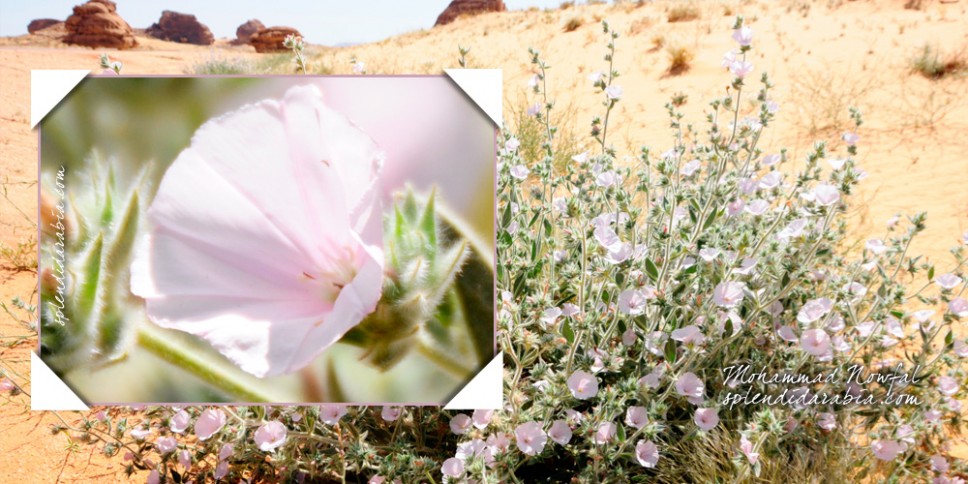

Convolvulus buschiricus
A shrubby plant with hairy stems to 1 meter long; light pink flowers 2.5 cm wide with no scent.
Location: Madain Salih in Madinah Province
Time: Afternoon, March
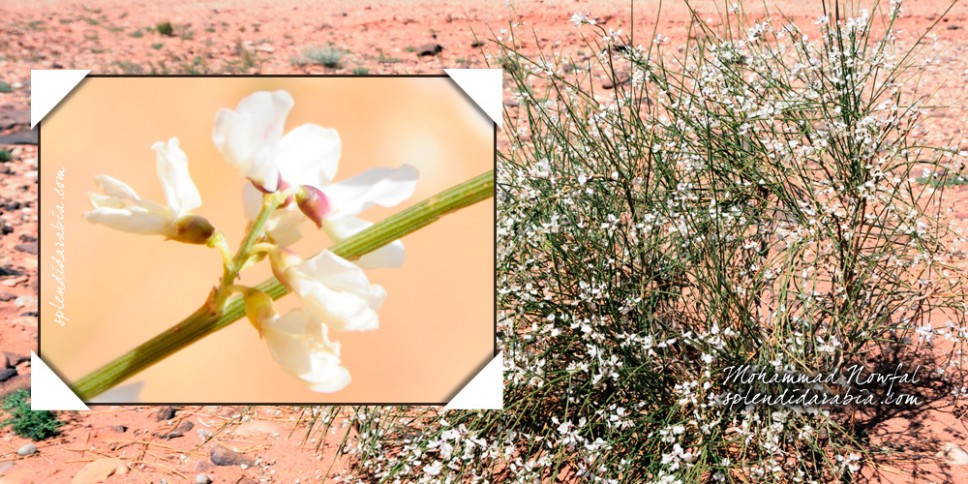

Retama raetam
A shrubby plant with thin and flexible branches, which are silvery-green when young and dark green when mature. It is also called ‘White Broom’. Small flowers with a size of 1 cm wide. It is impressive mainly due to its abundant blossoming. Its roots penetrate the soil to a great depth (some claim up to 20 meters), and they reach water even after the upper soil layers have dried. The leaves are simple, narrow, and elongated, with a length of 10 mm.
Location: Madain Salih, Madinah Province
Time: Mid noon, March
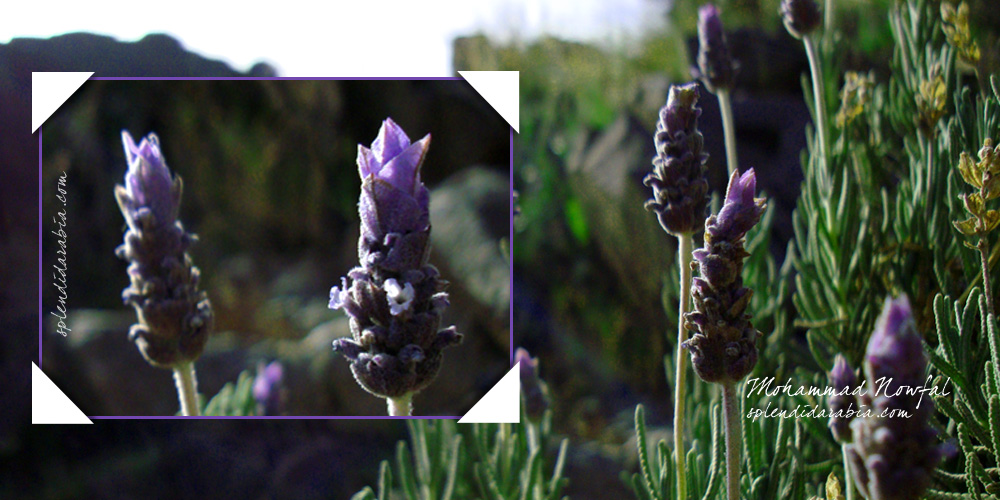
Lavandula dentata
A native flowering plant. Growing to 60 cm tall, it has gray-green, linear, or lance-shaped leaves with toothed edges and a lightly woolly texture. It has long-lasting, narrow spikes of purple flowers, topped with pale violet bracts. The whole plant is strongly aromatic with the typical lavender fragrance.
Location: Jabal Soodah, Asir Province
Time: September
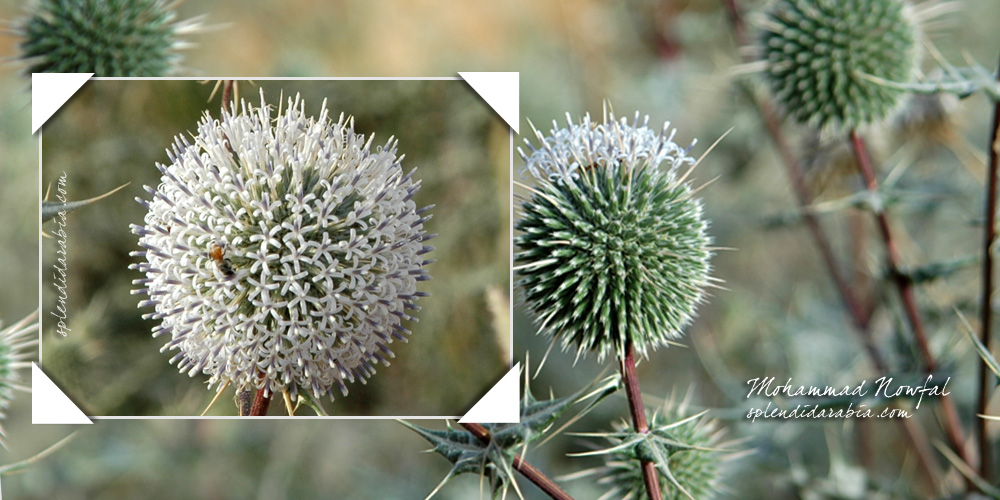

Echinops
An erect branching spiny-leaved herb 1m high; very pale blue flowers in spherical heads 4cm wide; faint sweet scent; the spines do not extend beyond the open flowers and the stems are pale brownish. Widespread in the region.
Location: Diriyyah area, 40 km NW of Riyadh
Time: Afternoon, April
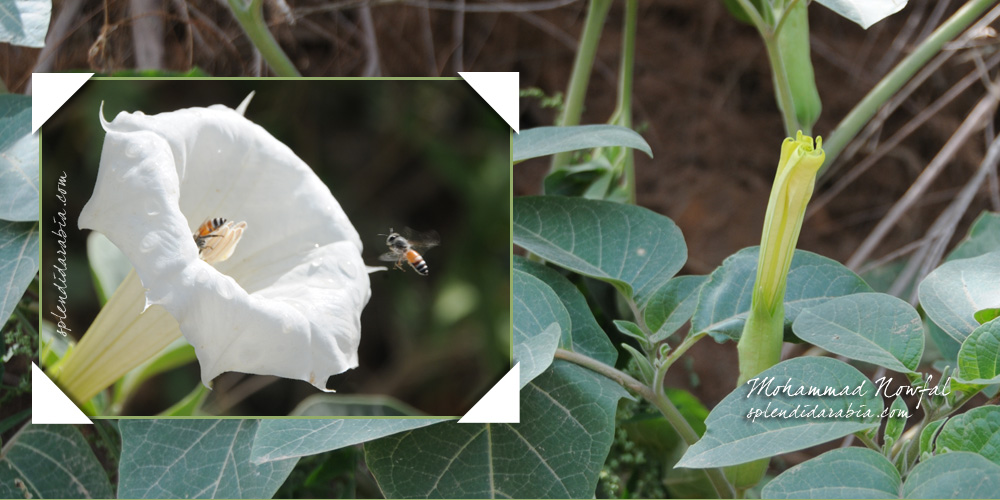

Datura innoxia
A branching leafy herb 60cm high with dark green leaves. The flower is trumpet-shaped, 4cm wide; very spiny hanging fruits. Its leaves are not grazed as it is highly poisonous even to man. It is a very widespread plant in the country.
Location: Al Hair, 30 km South of Riyadh
Time: Morning, December
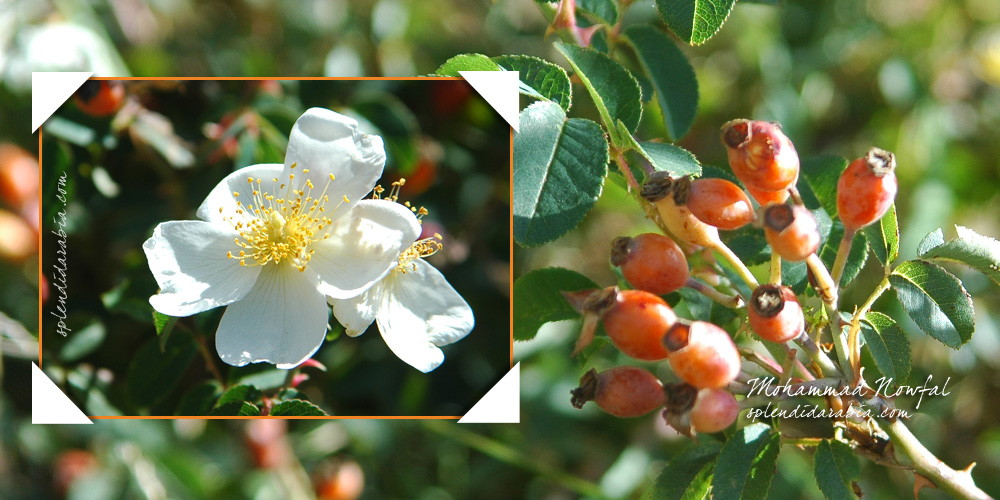

Rosa abyssinica
A thorny shrubby plant with stems to 4 meters long; creamy-white flowers 2.5 cm wide with a sweet scent. It has long weak shoots by which it grows over other plants.
Location: Abhah in the Asir Province
Time: Afternoon, November
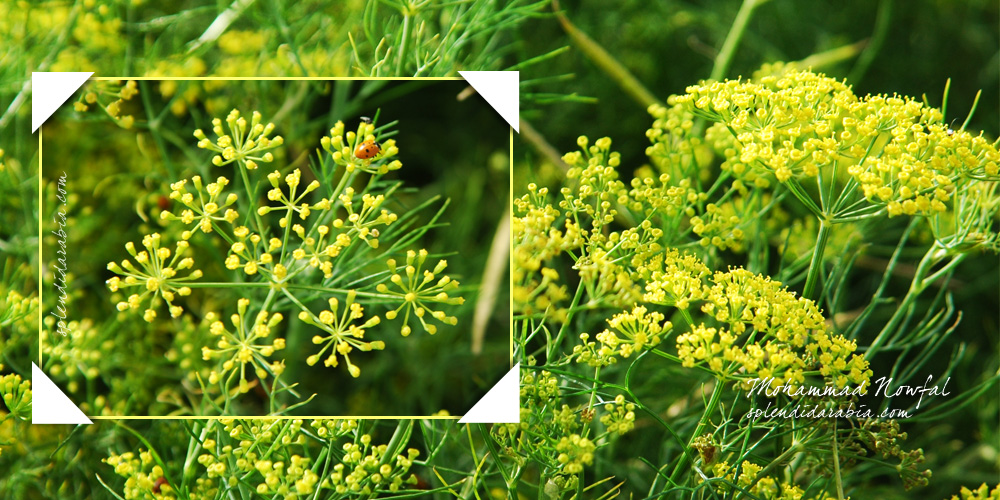

Ducrosia anethifolia (Apiaceae)
An erect leafy herb 35 cm tall branching from the base and with feathery grey-green leaves; Almost flat heads 9cm wide of tiny deep yellow flowers; very aromatic. Usually growing in colonies.
Location: Ragbah, 160 km NW of Riyadh
Time: Late afternoon, April
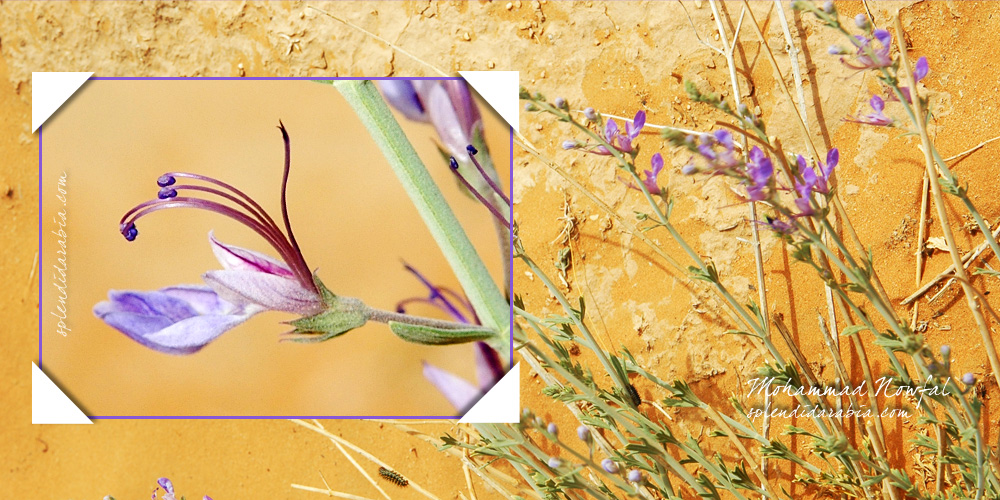

Teucrium Oliverianum
A leafy herb (40cm); widespread in wadis and on alluvial soils. It appears in spring after rainfall.
(Local Name: Qasba’a)
Location: Tumair, 160 KMs NE of Riyadh
Time: Morning, March

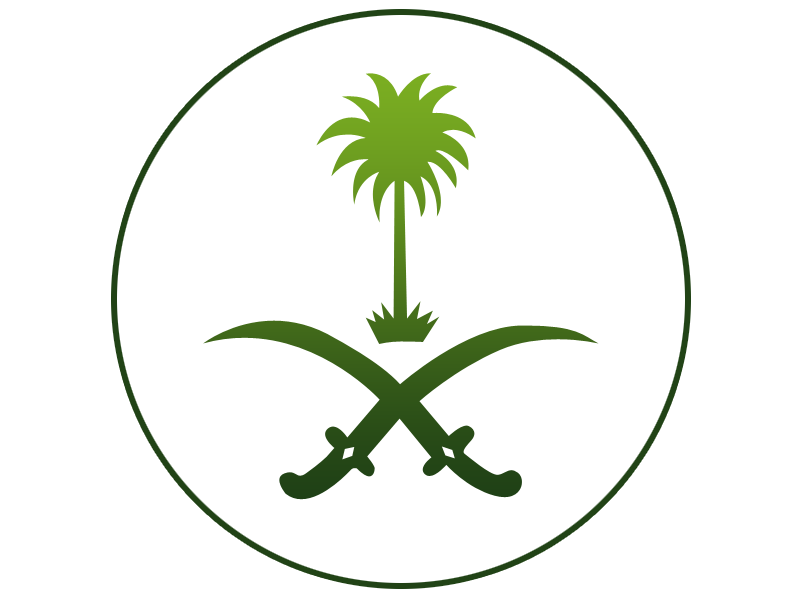
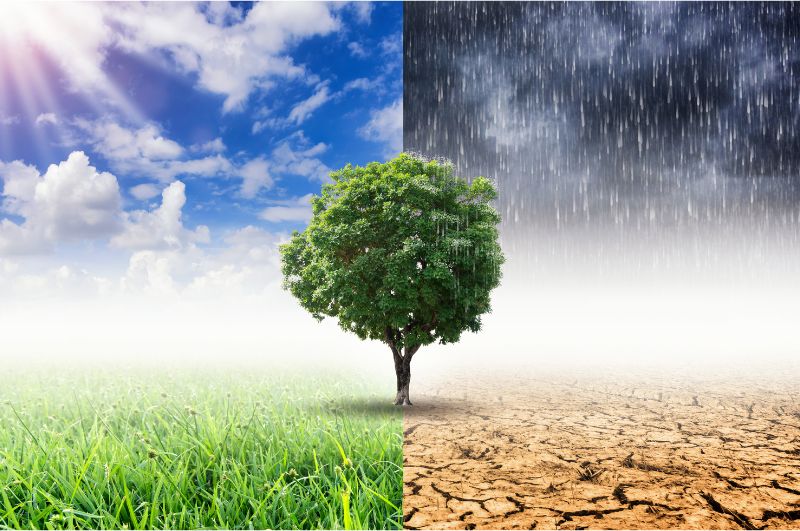

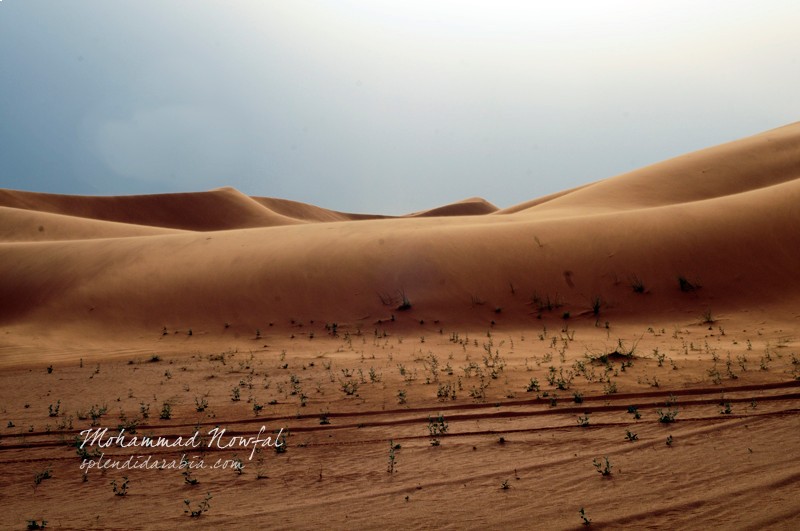
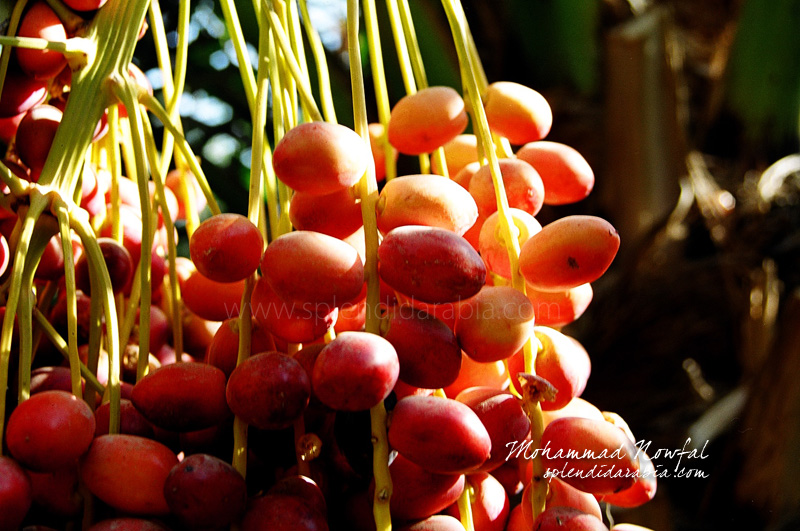

It’s great
The picture shown under Achillea biebersteinii is in fact, Ducrosia anethifolia (Apiaceae) or a Ferula sp.
Thank you for your message Dr. Jacob Thomas. I will verify it and make sure it is corrected.
This is a great website with wonderful pictures. 🙂
I like
Beautiful flora photographs. I am trying to identify a plant growing here in the desert in the Al Aflaj region of KSA. It’s a ground-hugging plant with small leaves, producing, on tendrils, a plenitude of extraordinary round fruits which dry to become brittle. A local member of staff says that in Arabic it is (transliterated) “hanthel” and has the local name “shari”. I have taken a number of photographs and put them on my Facebook business Page at https://www.facebook.com/DavidBoycePiano/photos/ms.c.eJw9j8kNADEIAztaEW7339gqEHiODD4SBk8mUk~_j~;LL5NMewxRE7jmFvnR8LSdJJOct9r8O495rzr9zsj02LQ5fLb~;Mtmldvv~_3jnU~_T73I5MHvc~_376elQ~;Hv~_Q0s0ep9V~;TD9Q8~;MH8~;2neH4QLp2xXPrkoffK7IWidLUfjyxPZQ~-~-.bps.a.895968137135181.1073741889.244714395593895/895968200468508/?type=1&theater
I also have an album there of photos of Calotropis Procera
Dear David,
Sorry for a very late reply though, the name of the plant in my knowledge is ‘colocynthis’ and is widely grown in the semi arid parts of the Kingdom. The fruit though looks like a small melon is not edible.
Thank you again for your interest in Splendid Arabia
yes they are called Handal in clasical arabic .very bitter tasting fruit, symbol of suffering when a person is having heartache of love etc.https://en.wikipedia.org/wiki/Citrullus_colocynthis the seeds are washed many times till bitterness is gone, then roasted, and can be eathen, taste great.
caltropis is called ushur عشر in classical arabic, the mango like fruit, explode, inside there are very fine and beautiful hairy slik like thread, used for pillow filling, for candle lighter, to start fire, etc. greeting from arabia
thanks this really helped. beautiful pictures 😉 : 0
Thank you for sharing these very beautiful images. I would love to see more of them. I wonder if you might tell me, Mrs. Collenette, whether any sort of large lily (Liliaceae) occurs naturally there; also, the Compositae Achillea millefolium, known as ‘yarrow’ in North America; and, also so familiar here, Daucus carota (an Umbelliferae)? It is odd how just a few images of wild flowers can alter one’s idea of another country’s lands.
this was so helpful. i wanted to know some of the native plants. this helps so much! found what i needed.
Do you know the name of this plant here I Riyadh? The pics are in my Facebook account. Thanks.
https://m.facebook.com/story.php?story_fbid=10209964742222006&id=1438582604
I am doing a report on Arabia and this site was SO helpful!
Thank You !
You are welcome Riley and glad that the info helped you.
Hard to read
If the names, sorry, it is the scientific names of the flowers/plants and are hard for me too 😉
Where do we go for the famous lavender fields?
Even though not a vast area of lavender fields, the one I have seen is in Jabal Soudah in Asir Region. The vast field, I heard, is in Al Jouf though I couldn’t see it.
Greetings
I am in search of lavendar real flowers or dry ones. I stay in Jeddah. Does anyone know wher i could purchase some
Collenette’s book on “wild flowers of Saudi Arabia” covers all Angiosperms including grasses, gymnosperms, Pteridophytes and all common mosses recorded from Saudi Arabia till 1998.
The number of species recorded so far from Saudi Arabia now stands at 2284 species
Good day all,
Anybody could help me find a store selling flowering plant seeds in dammam or alkhobar KSA?
Thank you
Well, I really enjoyed reading it. Beautiful images.
thank you so much, Kavya
I am a zoo veterinary, may I joint with your zoo job.
Splendid land! Thanks for the memories.
Prophet Muhammed was on a diet of leaves only just before he received god’s message. Which were the leaves he consumed?
Has anyone ever done succesfull seed collection of the native plants around riyadh? we want to establish a plant community from seed on a recently build rocky area (massive area) rather than planting exotic plants from nursery. Im interested in buying seeds or discussing seed collection. thanks
Great idea Roux. I would be so glad to be a part of it.
Sorry for my late reply, Roux, but here is a PDF from the Arriyadh Development Authority (ADA), cataloging local plants, and encouraging people to plant them.
http://www.ada.gov.sa/idc/groups/public/documents/AR_ADA_Prints/006793.pdf
Maybe if you contact them, they can point you toward a source. their web site is:
http://www.ada.gov.sa/ada_e
Hello, and thank you for your research. I am doing some research of my own and am most curious about the Lavender Dentata. I’ve heard that lavender grows native all over the Middle East and am curious if that is indeed a native to Saudi Arabia? It says that you photographed it in September and it was blooming. Do you think this was perhaps a second bloom as most of the Lavender spp would bloom much earlier in the summer season with the heat you get there. I have seen many different lavender species throw a second bloom.
Thank you for your time.
Lori
Dear Lori,
Sorry for a late reply and am glad you enjoyed splendidarabia. Sorry that I am not a botanist though always loved to be behind wildflowers. These are native to Saudi Arabia in my knowledge as it is shot in a wild place. I didn’t do more research on it.
Thank you again.
I am trying to identify the flowers on the back of the 2016 Saudi five riyal banknote. There are three different ones depicted. Also a fourth variety is seen on the back of the 1984 Saudi one riyal. I can send high resolution scans if needed. Otherwise images are available:
https://www.banknoteworld.com/saudi-arabia-5-riyals-2016-p-new-unc.html
and
https://www.banknoteworld.com/saudi-arabia-1-riyal-banknote.html
I was happy to discover that there is a lavandula that grows into the Al Soudah mountains.
Do you know if there are some local farmers that propagate and cultivate it in nurseries.
And many thanks for the beautiful photos and information.
Thank you, Thierry.
Unfortunately, I didn’t come across any local farmers that propagates it. It doesn’t mean there is none. Hope someone replies positively 🙂
Wonderful study .. I’m beginning a vegetation survey in the region outside Riyadh and would very much like to purchase your book. Please advise and also let me know if any other useful resources for plant identification. Thank you
Dear Wendy, the author of the book is Mrs. Sheila Collenette. Kindly check if it is still available on Amazon.
Great article, keep working 👏
Where can I find the book?